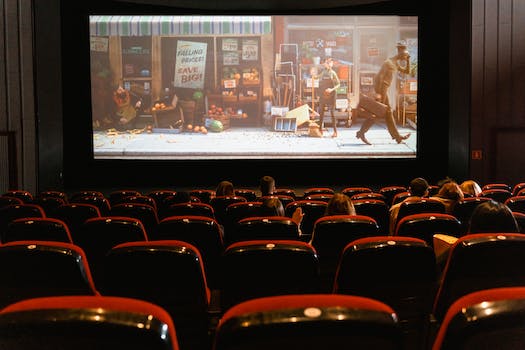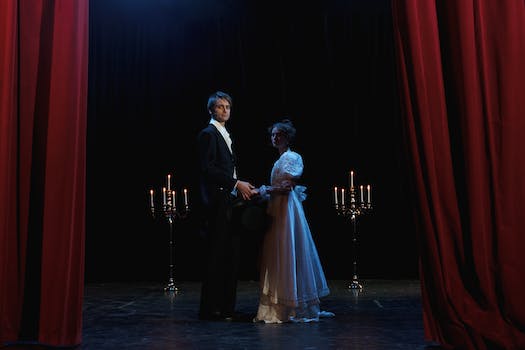Roma is a highly acclaimed movie that has captivated audiences worldwide. Directed by Alfonso Cuarón, this masterpiece takes viewers on a captivating journey through the life of Cleo, a domestic worker in Mexico City during the early 1970s. With its stunning cinematography, raw emotions, and thought-provoking storytelling, Roma has garnered critical acclaim and numerous awards. In this movie review, we will delve deeper into the various aspects that make Roma a must-watch film for both cinephiles and casual viewers alike.
- 1. Introduction
- 1.1. Overview of the movie Roma
- 1.2. Director and production details
- 1.3. Plot summary
- 1.4. Critical acclaim and awards
- 1.5. Audience reception
- 2. Cinematography and Visuals
- 2.1. Expertise of Alfonso Cuarón
- 2.2. Use of black and white cinematography
- 2.3. Composition and framing
- 2.4. Attention to detail
- 2.5. Visual storytelling
- 3. Character Development and Acting
1. Introduction
Roma is a critically acclaimed film directed by Alfonso Cuarón. Set in the early 1970s in Mexico City, the movie tells the story of Cleo, a young indigenous domestic worker for a middle-class family. The film explores themes of class, race, and gender dynamics, providing a poignant and intimate look into the lives of its characters. With stunning cinematography and a compelling narrative, Roma has captivated audiences and garnered numerous awards and nominations. In this article, we will delve deeper into the various aspects of this remarkable film.
1.1. Overview of the movie Roma
Roma is a remarkable film directed by Alfonso Cuarón. Released in 2018, the movie takes place in the turbulent Mexico City of the 1970s. It tells the story of Cleo, a young domestic worker for a middle-class family, and her experiences within the household and the wider sociopolitical landscape.
Cuarón’s attention to detail and masterful storytelling make Roma a visually stunning and emotionally gripping cinematic experience. The film explores themes of love, class divisions, and societal upheaval, all against the backdrop of Mexico’s political unrest.
Roma has received widespread critical acclaim and numerous awards, including the Golden Lion at the Venice Film Festival. Its black-and-white cinematography, authentic performances, and immersive sound design contribute to its undeniable artistic brilliance.
In this article, we will delve into the various aspects of Roma, analyzing its narrative, cinematography, performances, and overall impact on the world of cinema.
1.2. Director and production details
Director: Alfonso Cuarón
Production Company: Esperanto Filmoj
Release Year: 2018
1.3. Plot summary
Roma is a critically acclaimed Mexican film directed by Alfonso Cuarón. Set in the early 1970s, the movie revolves around the life of Cleo, a domestic worker for a middle-class family in Mexico City. The film beautifully captures the struggles, dreams, and emotions of Cleo as she navigates through personal and societal challenges. With stunning cinematography and a powerful narrative, Roma offers a heartfelt portrayal of love, loss, and the complexities of human relationships.
1.4. Critical acclaim and awards
Roma, directed by Alfonso Cuarón, has garnered critical acclaim and received numerous awards since its release. The film, set in the early 1970s in Mexico City, follows the life of a domestic worker named Cleo and the family she works for. It beautifully captures the personal and political turmoil of the time, while providing an intimate portrayal of the characters’ lives. Roma has been praised for its stunning cinematography, meticulous attention to detail, and powerful storytelling. It has won several prestigious awards, including the Golden Lion at the Venice Film Festival and the Academy Award for Best Director. Additionally, it has received widespread recognition from critics and audiences alike, solidifying its place as a cinematic masterpiece.
1.5. Audience reception
Audience reception for Movie Review: Roma
2. Cinematography and Visuals
The cinematography and visuals in the movie Roma are absolutely stunning. The film, directed by Alfonso Cuarón, captures the beauty and essence of 1970s Mexico City with incredible precision. Every frame of the movie is carefully composed, showcasing Cuarón’s masterful eye for detail.
The use of black and white cinematography adds a timeless quality to the film, enhancing the nostalgic atmosphere. The contrast between light and shadow is expertly utilized, creating visually striking scenes. The camera movements are smooth and deliberate, adding to the overall visual experience.
One of the standout aspects of the cinematography is the long takes that Cuarón employs throughout the movie. These uninterrupted shots allow the audience to fully immerse themselves in the story and feel like they are right there with the characters. The long takes also highlight the incredible performances of the cast, capturing their emotions and expressions in a raw and intimate way.
Overall, the cinematography and visuals in Roma are breathtaking and contribute immensely to the storytelling. Cuarón’s attention to detail and his ability to create visually stunning scenes make this movie a true visual masterpiece.
2.1. Expertise of Alfonso Cuarón
Alfonso Cuarón’s expertise in cinematography and visuals is truly remarkable. In his latest film, Roma, Cuarón showcases his exceptional talent in capturing stunning imagery and creating a visually immersive experience for the audience.
Cuarón’s attention to detail and meticulous framing of each scene is evident throughout the movie. He skillfully utilizes camera movements, angles, and lighting to enhance the storytelling and evoke emotions.
One of the notable aspects of Cuarón’s cinematography in Roma is his use of long takes. He seamlessly blends different sequences into one continuous shot, allowing the viewers to feel like they are part of the unfolding events.
The visuals in Roma are simply breathtaking. Cuarón’s choice of black and white cinematography adds a timeless and artistic quality to the film. Every frame is meticulously composed, creating a sense of beauty and authenticity.
Furthermore, Cuarón’s use of natural lighting enhances the realism and atmosphere of the film. Whether it’s the soft glow of a sunset or the dimly lit interiors, the lighting perfectly complements the mood of each scene.
Overall, Alfonso Cuarón’s expertise in cinematography and visuals shines through in Roma. His meticulous attention to detail, masterful framing, and artistic choices elevate the film to a whole new level, making it a visual treat for cinephiles.
2.2. Use of black and white cinematography
Black and white cinematography has long been used in films to create a unique and visually striking experience for the viewers. In the movie Roma, director Alfonso Cuarón employs this technique to great effect, enhancing the storytelling and evoking a sense of nostalgia.
The decision to shoot Roma in black and white serves multiple purposes. Firstly, it helps to transport the audience back in time, as the film is set in the 1970s. The monochromatic visuals add a timeless quality to the narrative, making it feel almost like a classic piece of cinema.
Furthermore, black and white cinematography allows the director to focus on the details and textures of the scenes. Without the distraction of color, the audience can fully immerse themselves in the characters and their surroundings. This technique enhances the emotional impact of the film, as it brings a sense of intimacy and rawness to the storytelling.
Moreover, the use of black and white cinematography highlights the contrast between light and shadow. The play of light in each frame becomes more pronounced, creating a visually striking composition. This adds depth and visual interest to the film, making it a feast for the eyes.
Overall, the use of black and white cinematography in Roma elevates its visual storytelling and adds an extra layer of depth to the film. It effectively transports the audience to a different era, enhances the emotional impact, and creates visually stunning compositions. It is a testament to the director’s artistic vision and his ability to use cinematography as a powerful storytelling tool.
2.3. Composition and framing
Composition and framing play a crucial role in creating the visual language of a film. In the movie ‘Roma’, directed by Alfonso Cuarón, the cinematography and visuals are masterfully executed to enhance the storytelling and evoke emotions in the audience.
Cuarón’s choice of composition and framing techniques adds depth and meaning to each scene. The film predominantly uses wide shots and long takes, allowing the viewers to fully immerse themselves in the world of the characters. The carefully planned and balanced compositions create a sense of symmetry and harmony, highlighting the beauty in the mundane.
The use of black and white cinematography further enhances the visual narrative of ‘Roma’. By stripping away colors, the focus is solely on the contrast, textures, and shadows, intensifying the emotions conveyed in each frame. The monochromatic visuals also serve as a metaphor for the socio-political backdrop of the story, reflecting the stark realities of class and race in 1970s Mexico City.
The cinematography in ‘Roma’ also employs long tracking shots, which smoothly follow the characters’ movements. These elaborate camera movements not only add visual interest but also create a sense of intimacy and proximity to the characters. The carefully choreographed camera work allows the audience to experience the events unfolding in real-time, immersing them in the personal journeys of the characters.
In conclusion, the composition and framing techniques used in ‘Roma’ contribute significantly to its visual appeal and storytelling. The deliberate choices of wide shots, black and white cinematography, and long tracking shots create a visually stunning and emotionally engaging experience for the viewers.
2.4. Attention to detail
The cinematography and visuals in the movie Roma are truly remarkable. Director Alfonso Cuarón pays meticulous attention to detail, capturing every frame with precision and artistry. The stunning black and white visuals create a timeless and atmospheric quality, transporting the audience to 1970s Mexico City. From wide shots of the cityscape to intimate close-ups of the characters, every scene is beautifully composed and visually striking. Cuarón’s use of long takes and tracking shots adds to the immersive experience, allowing the viewers to fully engage with the story. The attention to detail is evident in the way each shot is carefully lit, showcasing the textures and nuances of the surroundings. Whether it’s the reflection of light on water or the play of shadows in a dimly lit room, every visual element is thoughtfully considered. The cinematography in Roma elevates the storytelling and enhances the emotional impact of the narrative, making it an integral part of the film’s success.
2.5. Visual storytelling
Visual storytelling is an essential aspect of cinematography and visuals in the movie Roma. The film beautifully utilizes the power of visuals to convey emotions, themes, and narratives. Director Alfonso Cuarón’s meticulous attention to detail and his artistic vision are evident in every frame.
Cuarón’s use of long takes and wide shots allows the audience to immerse themselves in the world he has created. The camera movements are deliberate and purposeful, drawing the viewers’ attention to specific elements in the scene. This technique enhances the storytelling by emphasizing important moments and creating a sense of intimacy.
The use of black and white cinematography adds depth and enhances the visual aesthetics of the movie. It gives the film a timeless and nostalgic feel, transporting the audience to the 1970s setting. The contrast between light and shadow is used effectively to create a visually striking composition.
Moreover, the attention to detail in production design further enhances the visual storytelling. The sets, costumes, and props are meticulously crafted to recreate the time period and evoke a sense of authenticity. This attention to detail adds layers of meaning to the visuals, enriching the overall cinematic experience.
In conclusion, the cinematography and visuals in Roma are masterfully executed, showcasing the power of visual storytelling. Every frame is carefully composed to convey emotions, capture the essence of the story, and immerse the audience in the world of the film.
3. Character Development and Acting
Character Development and Acting
Roma, directed by Alfonso Cuarón, showcases exceptional character development and brilliant acting performances. The film revolves around Cleo, a domestic worker for a middle-class family in 1970s Mexico City.
Throughout the movie, Cleo’s character undergoes significant development, transforming from a reserved and quiet individual into a strong and resilient woman. The audience witnesses her growth as she navigates through personal hardships and societal challenges.
Yalitza Aparicio, who portrays Cleo, delivers a stunning performance that captures the character’s emotions and struggles with great authenticity. Her nuanced acting brings depth to Cleo, making her a relatable and memorable protagonist.
Moreover, the rest of the cast also delivers exceptional performances, adding layers of complexity to their respective characters. Each actor brings their unique abilities, making the interactions between the characters feel genuine and realistic.
The combination of well-written characters and exceptional acting elevates the film, creating a deeply engaging and immersive experience for the audience. The character development and acting in Roma contribute significantly to the film’s overall success.
3.1. Lead performances
The lead performances in the movie ‘Roma’ demonstrate exceptional character development and acting skills. The actors bring their characters to life with such depth and authenticity that it becomes easy for the audience to emotionally connect with them. From the very first scene, the performances captivate viewers and hold their attention throughout the film.
One standout performance is delivered by Yalitza Aparicio, who plays the lead role of Cleo. Aparicio’s portrayal of Cleo is incredibly nuanced and powerful. She effectively conveys Cleo’s emotions, struggles, and resilience, making her character feel real and relatable.
Another notable performance comes from Marina de Tavira, who plays Sofia, the matriarch of the family. De Tavira skillfully portrays Sofia’s complex range of emotions as she navigates through personal hardships and family dynamics. Her performance adds depth to the overall narrative and enhances the emotional impact of the story.
The supporting cast also delivers commendable performances, adding layers to the storytelling. Each actor brings their own unique touch to their respective characters, contributing to the overall authenticity and richness of the film.
In terms of acting, ‘Roma’ excels in its ability to showcase realistic and compelling performances. The actors’ portrayals of their characters make them feel like real people, evoking empathy and understanding from the audience. The combination of strong character development and exceptional acting creates a truly immersive cinematic experience.
3.2. Supporting cast
The supporting cast plays a crucial role in the overall character development and acting in the movie Roma. Each member of the supporting cast brings depth and nuance to their respective roles, enhancing the storytelling and adding layers of complexity to the narrative.
From Cleo’s fellow housemaid Adela, played by Nancy García García, to the children’s grandmother Teresa, portrayed by Verónica García, every character is carefully crafted and expertly portrayed.
The interactions between the main character Cleo, played by Yalitza Aparicio, and the supporting cast are beautifully executed, allowing for genuine emotions and connections to be formed on screen. The chemistry between the actors is palpable, resulting in authentic performances that draw the audience into the story.
Through their individual performances, the supporting cast helps to illuminate different aspects of Cleo’s character, showcasing her relationships, struggles, and growth throughout the film. They provide a solid foundation for the central narrative, making it more engaging and compelling.
In addition to their acting abilities, the supporting cast also adds depth to the overall visual aesthetics of the movie. The way they move and interact within the beautifully designed sets and landscapes further enhances the cinematic experience.
Overall, the supporting cast in Roma delivers exceptional performances that contribute to the overall success of the movie. Their talent and dedication to their roles elevate the character development and acting, making it a truly memorable cinematic experience.
3.3. Emotional depth of characters
The emotional depth of the characters in the movie Roma is truly remarkable. The film focuses on the character development and acting, presenting a rich and nuanced portrayal of each individual. Director Alfonso Cuarón skillfully brings out the inner complexities and vulnerabilities of the characters, allowing the audience to connect with them on a deep level.
One of the main strengths of the film lies in its ability to depict the characters’ emotions in a raw and authentic manner. From the quiet moments of contemplation to the intense bursts of anger or grief, every emotion feels genuine and relatable. The audience gets to experience the characters’ joys, sorrows, and struggles, which adds a layer of realism to the storytelling.
The lead character, Cleo, played brilliantly by Yalitza Aparicio, is a prime example of the emotional depth portrayed in the film. Through her subtle expressions and heartfelt performance, Aparicio brings out the complexities of Cleo’s journey as a domestic worker and her personal life. The audience witnesses her strength, vulnerability, and resilience, making her a truly memorable character.
Moreover, the supporting characters in Roma also exhibit emotional depth. Each character has their own unique story and emotional arc, adding depth and complexity to the overall narrative. Whether it’s the mother Sofia dealing with marital issues or the children grappling with their own coming-of-age experiences, their emotions are palpable and evoke empathy from the audience.
In conclusion, the emotional depth of the characters in Roma is a major highlight of the film. The combination of skillful direction, exceptional acting, and well-crafted storytelling allows the audience to form a deep connection with the characters and their journeys. It is through this emotional depth that Roma transcends being just a movie and becomes an immersive and impactful cinematic experience.
3.4. Character arcs
Character arcs play a crucial role in the development and acting of a movie, and ‘Roma’ is no exception. Directed by Alfonso Cuarón, ‘Roma’ beautifully portrays the journey of its characters, giving them complex and compelling arcs that captivate the audience.
One of the central characters in ‘Roma’ is Cleo, a domestic worker for a middle-class family in Mexico City. Cleo’s arc takes her from being a seemingly quiet and reserved character to someone who discovers her own strength and resilience in the face of adversity.
Throughout the film, we witness Cleo’s transformation as she navigates through various challenges, including personal tragedies and societal expectations. Her character arc is deeply emotional and allows the audience to connect with her on a profound level.
Another notable character arc in ‘Roma’ is that of Sofía, the matriarch of the family Cleo works for. Sofía’s arc revolves around her strained relationship with her husband and her journey towards independence and self-discovery. As the story progresses, we see Sofía’s character evolve, challenging traditional gender roles and finding her own voice.
The carefully crafted character arcs in ‘Roma’ not only contribute to the overall narrative but also highlight the depth and complexity of the human experience. These arcs showcase the power of character development and acting, as they allow the actors to fully embody their roles and deliver remarkable performances.
In conclusion, ‘Roma’ excels in portraying compelling character arcs that add depth and emotional resonance to the film. The intricate development and nuanced performances make the characters relatable and memorable, ensuring that the audience remains engaged throughout the movie.
3.5. Impact on the storytelling
The storytelling in the movie Roma has a profound impact on the development of its characters and their acting. Director Alfonso Cuarón masterfully crafts a narrative that delves deep into the lives of the characters, allowing their personalities and motivations to shine through. Through meticulous attention to detail and immersive storytelling techniques, Cuarón takes the audience on an emotional journey that reveals the complexities of the characters.
One of the notable aspects of character development in Roma is the realism with which the characters are portrayed. The actors deliver outstanding performances, capturing the essence of their roles and portraying them with authenticity. The audience becomes deeply invested in the lives of the characters, empathizing with their struggles and triumphs.
Cuarón’s direction also plays a crucial role in the character development and acting. He creates a visual language that effectively communicates the emotions and experiences of the characters. The use of long takes and wide shots allows the audience to observe the characters in their environment, gaining insight into their inner worlds.
Furthermore, the storytelling technique employed in Roma helps in unraveling the layers of the characters’ personalities. The nonlinear narrative allows for a deeper exploration of their pasts, motivations, and relationships. This approach adds depth and complexity to the characters, making them feel authentic and multidimensional.
In conclusion, the impact of storytelling on character development and acting in Roma is undeniable. The combination of realistic portrayals, skilled performances, and immersive storytelling techniques creates a cinematic experience that leaves a lasting impression on the audience. Alfonso Cuarón’s masterful direction brings the characters to life, allowing them to evolve and resonate with viewers.
Conclusion
In conclusion, Roma is a beautifully crafted film that captivates its audience with its stunning visuals, heartfelt storytelling, and powerful performances. It skillfully explores themes of love, family, and societal struggles, leaving a lasting impact on viewers. With its attention to detail and masterful direction by Alfonso Cuarón, Roma proves to be an exceptional cinematic experience that should not be missed.





